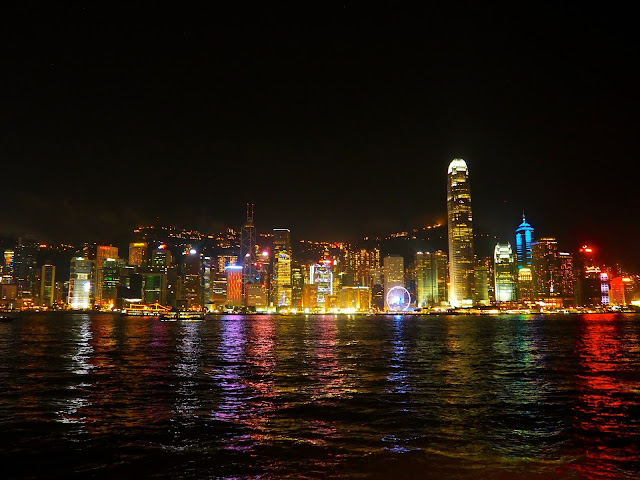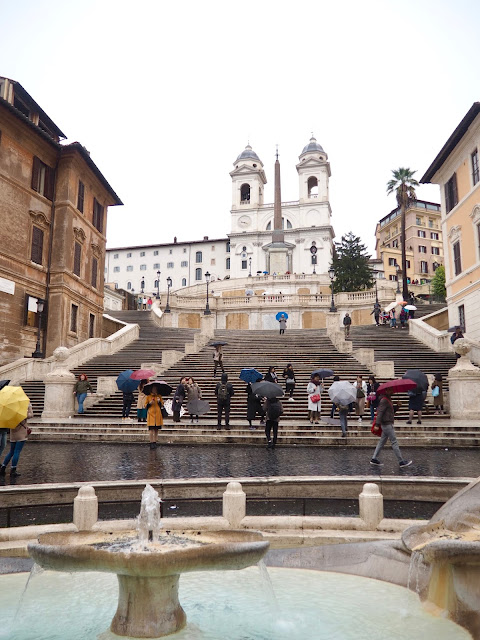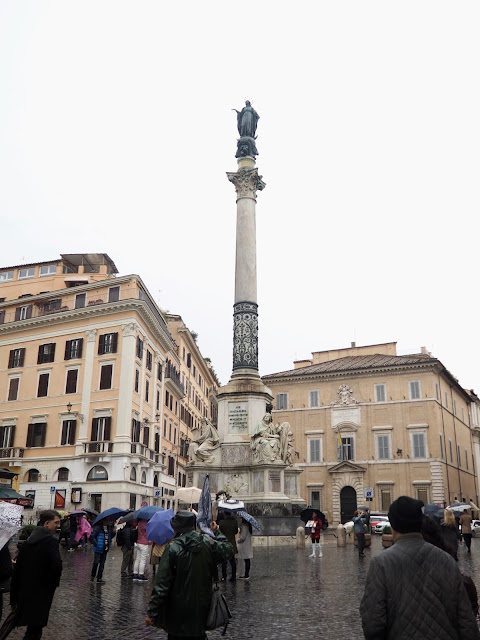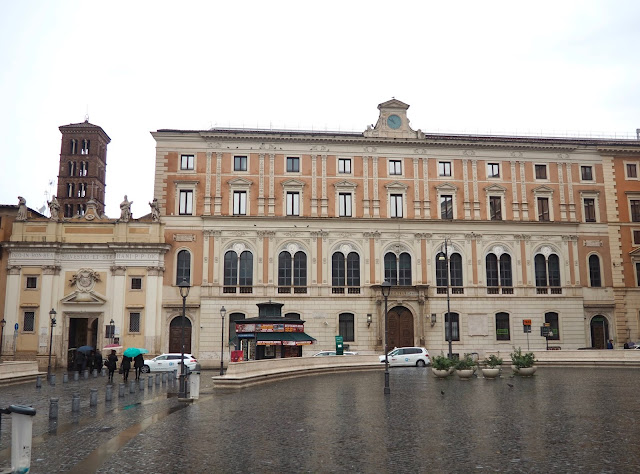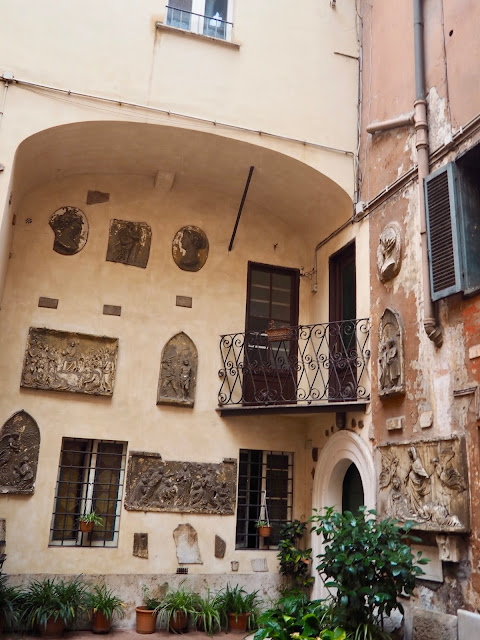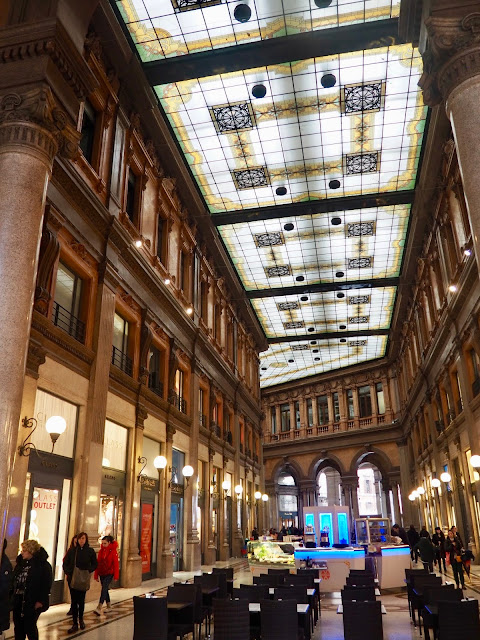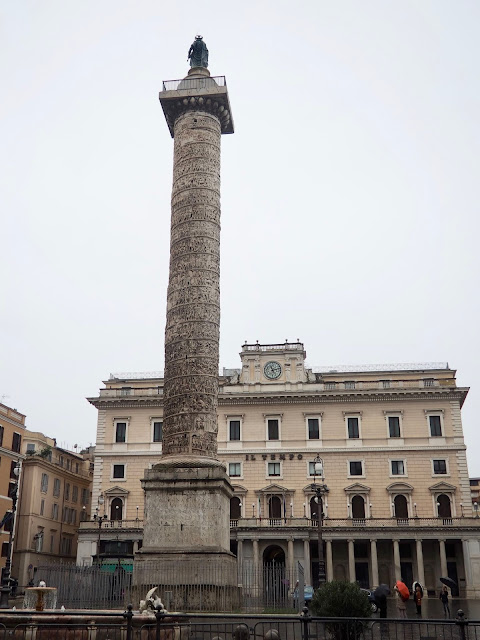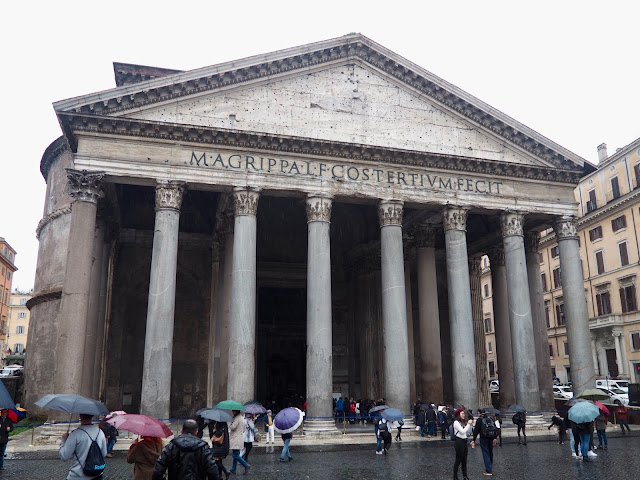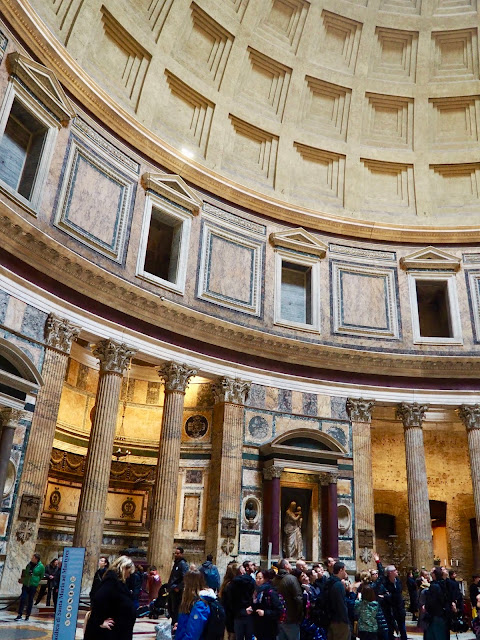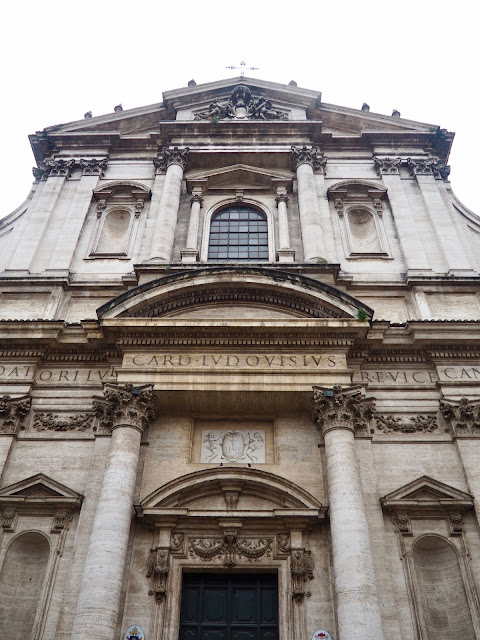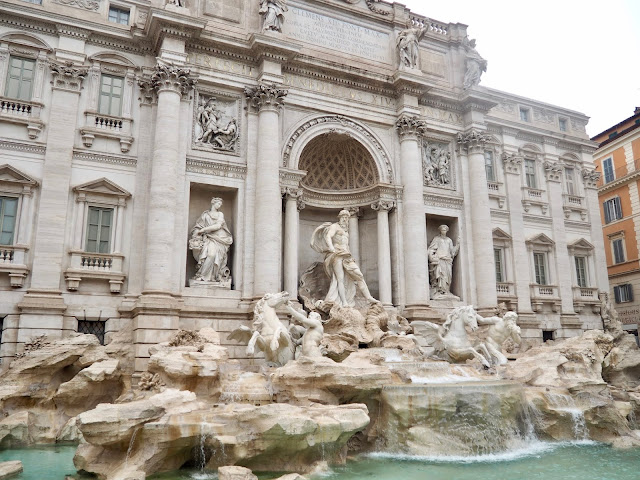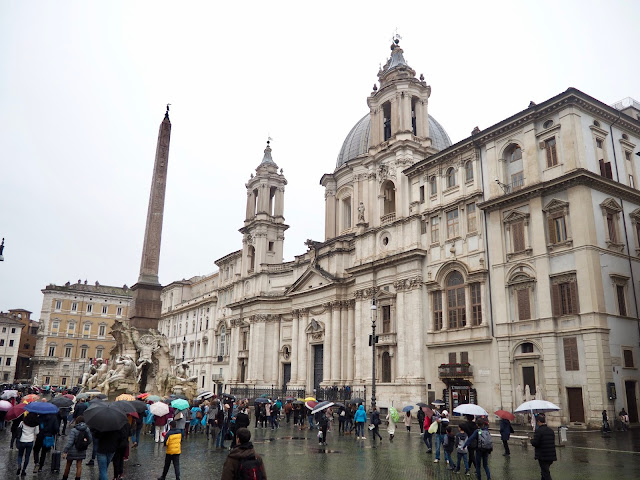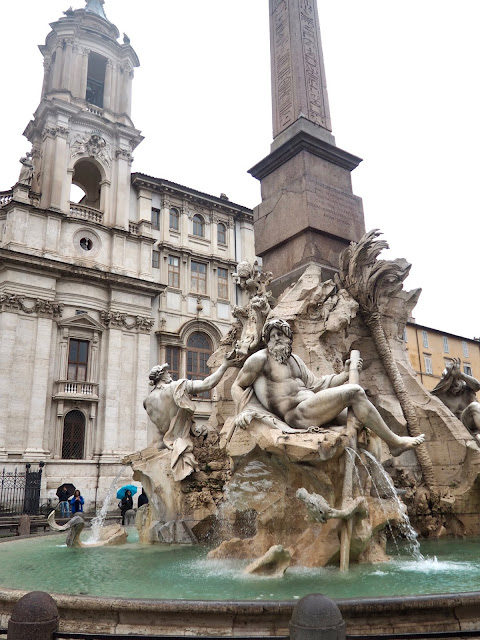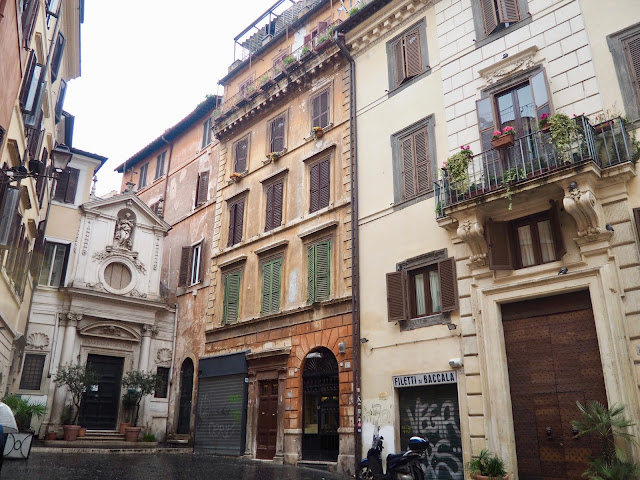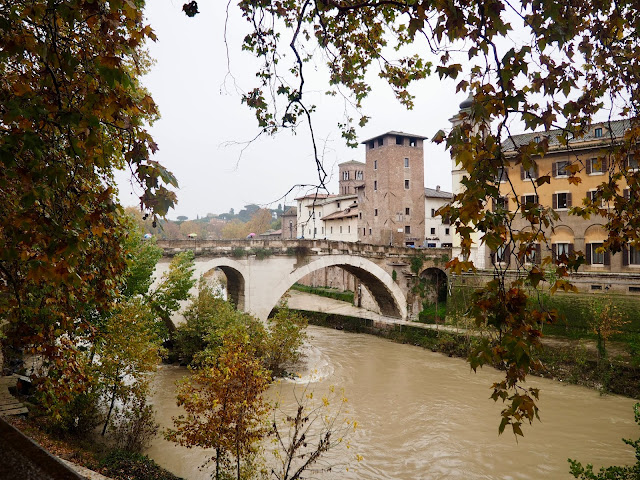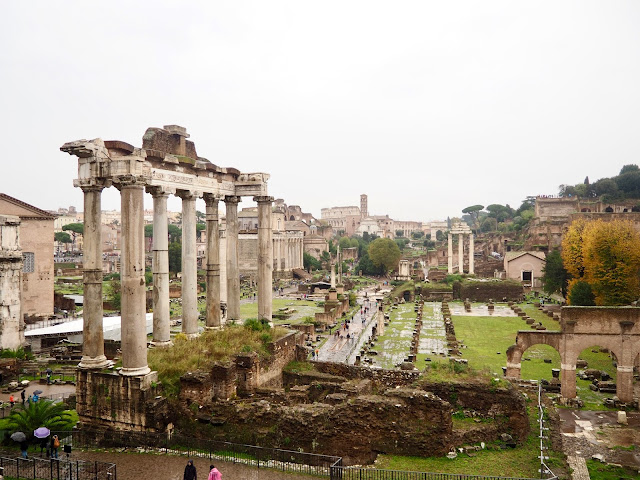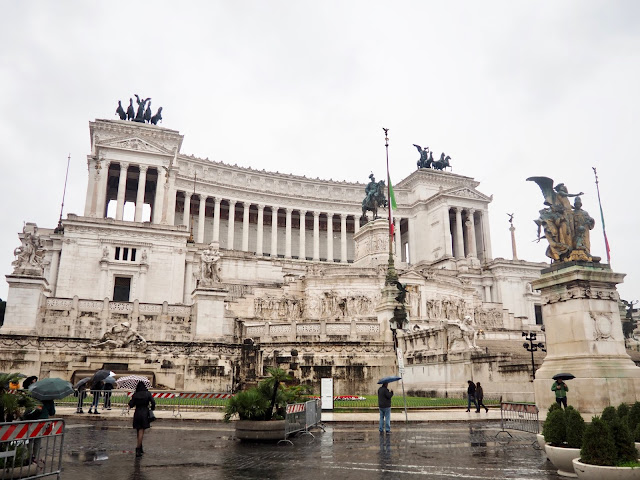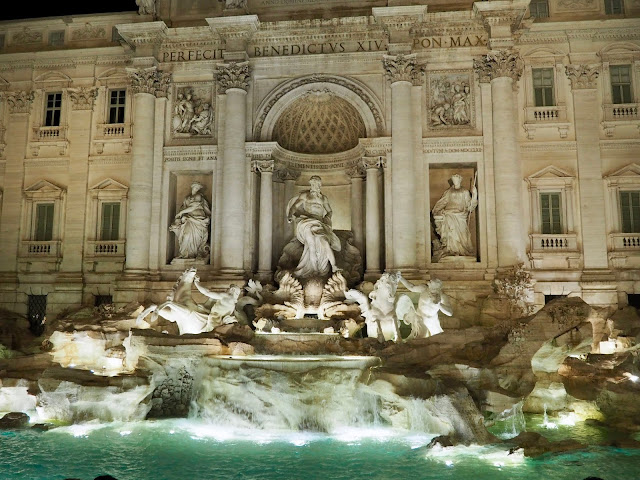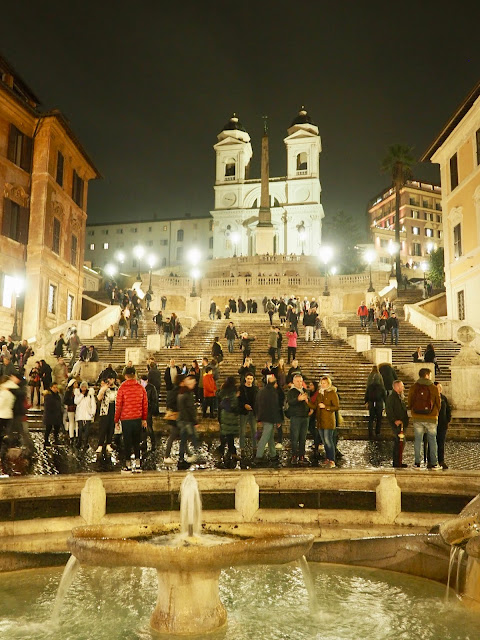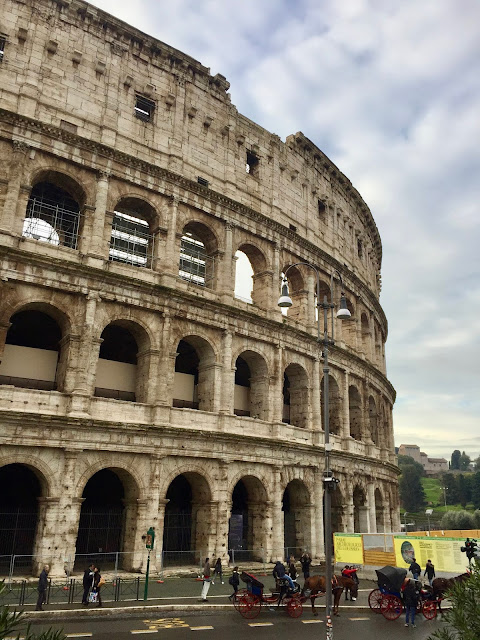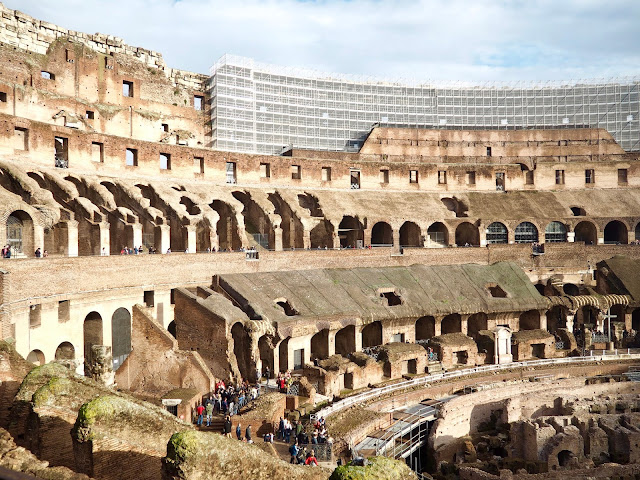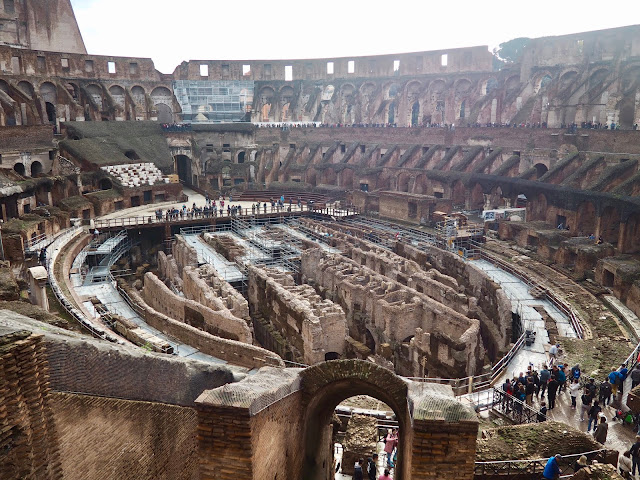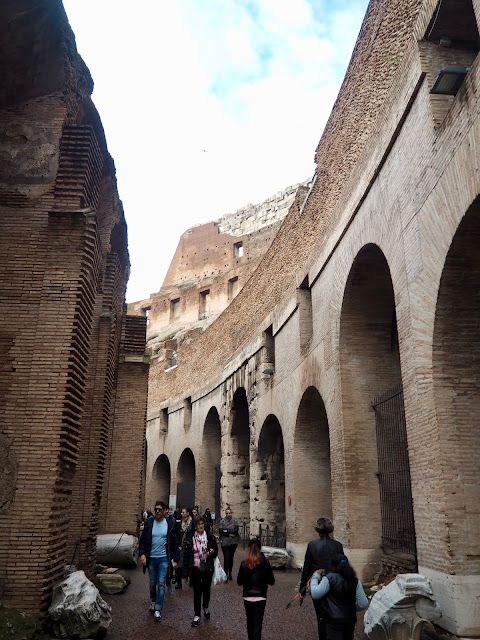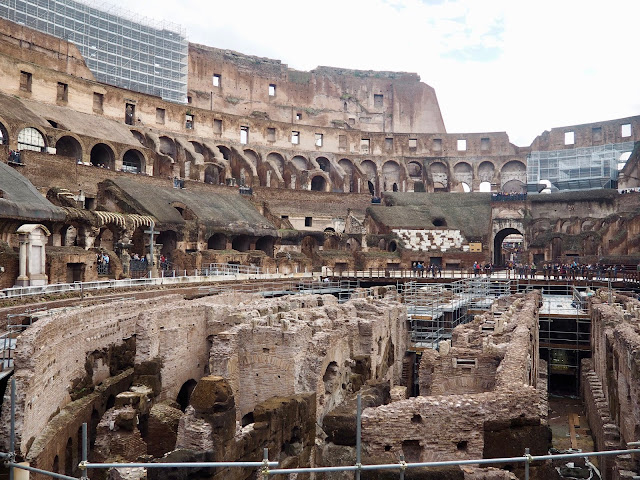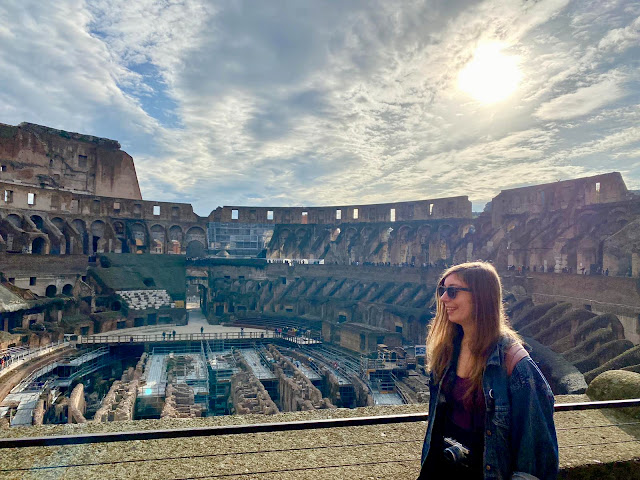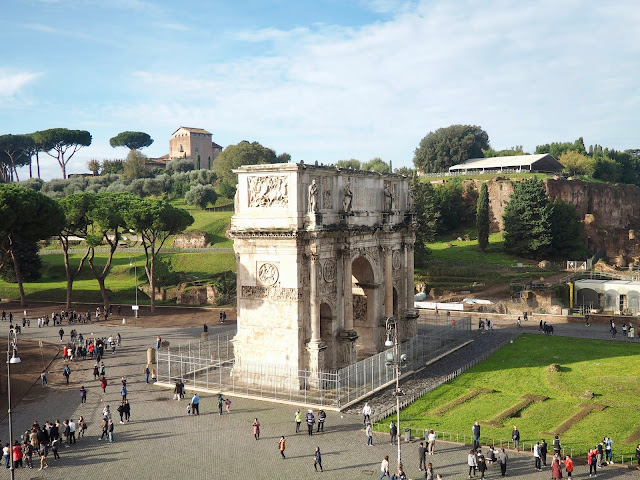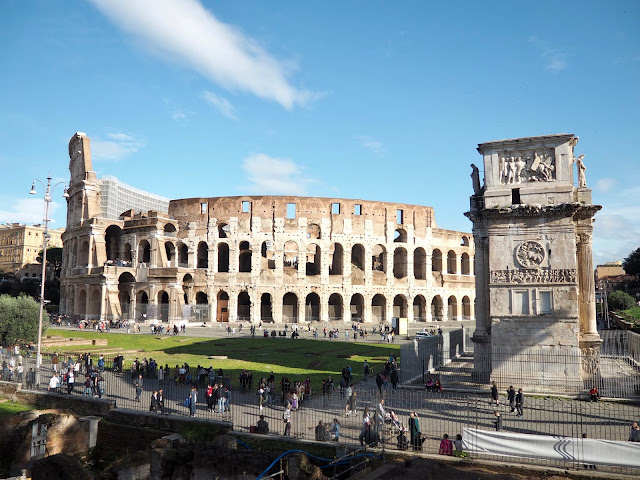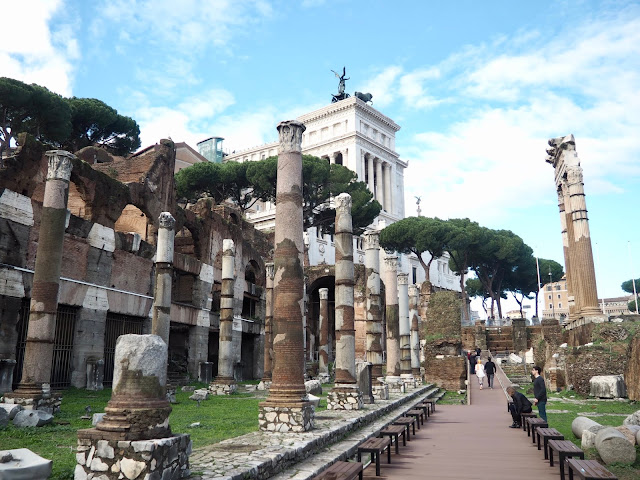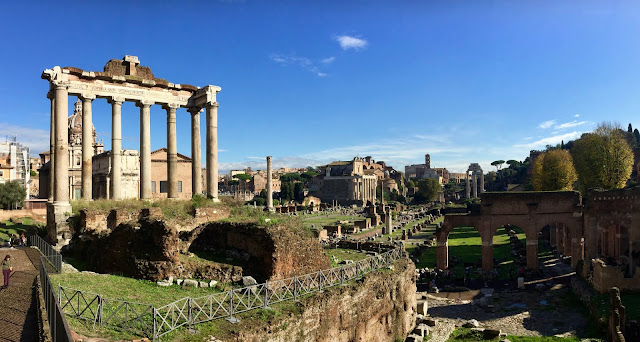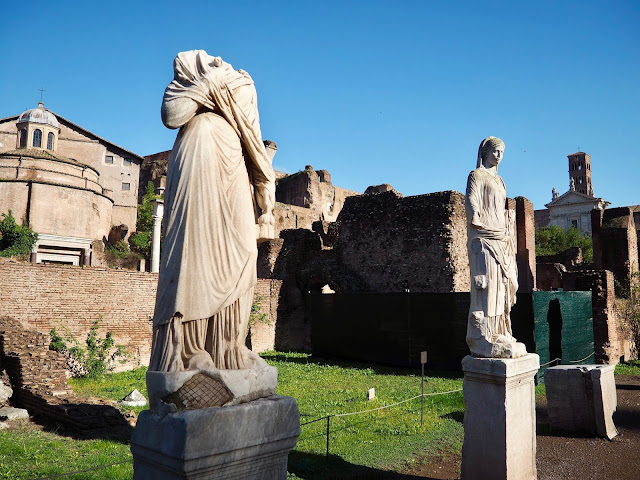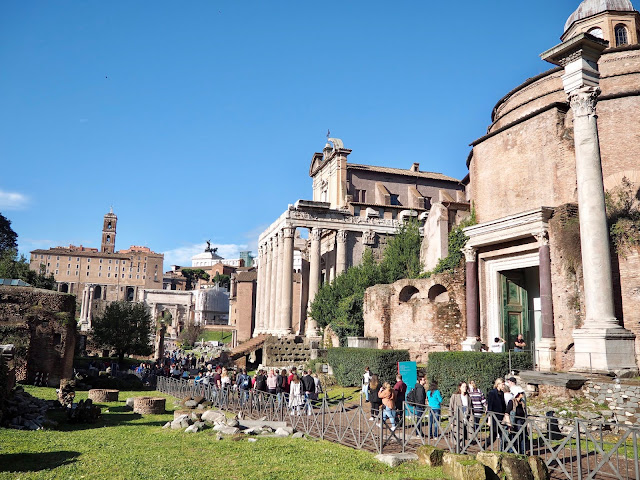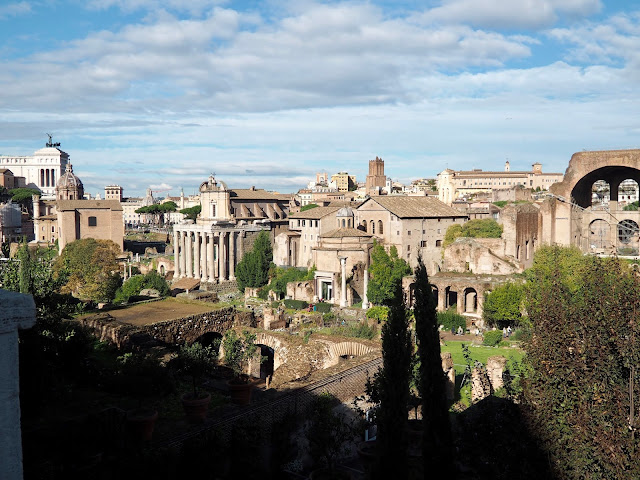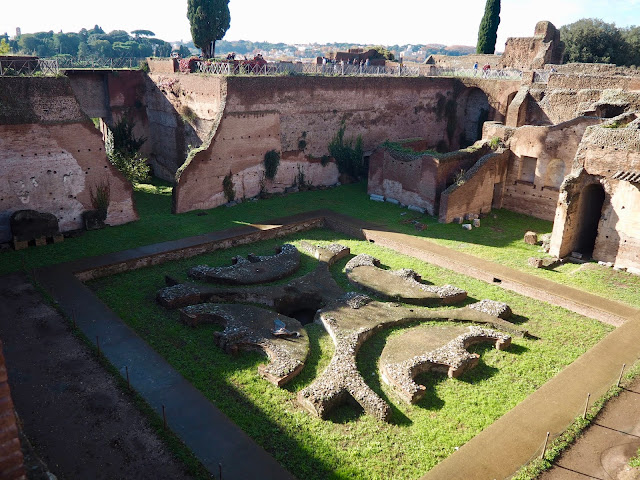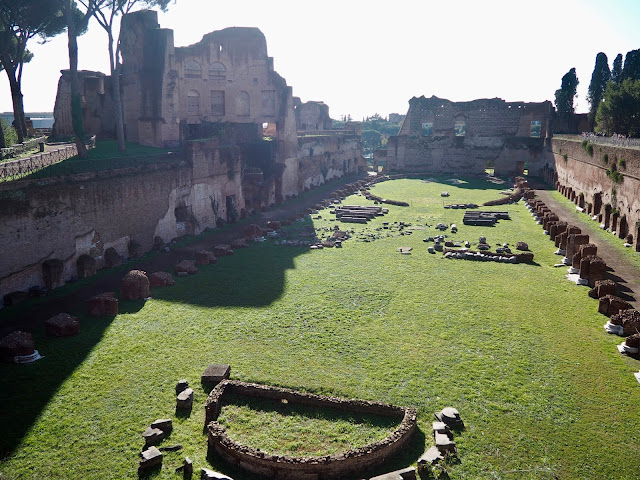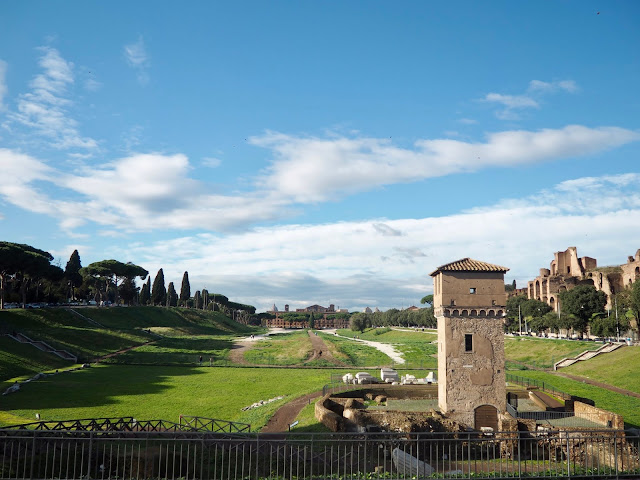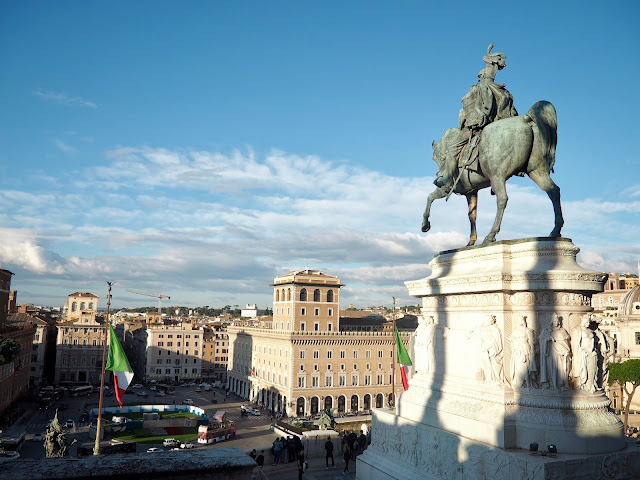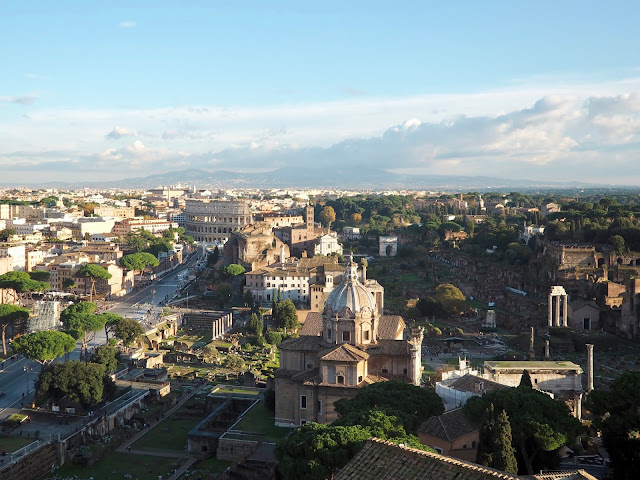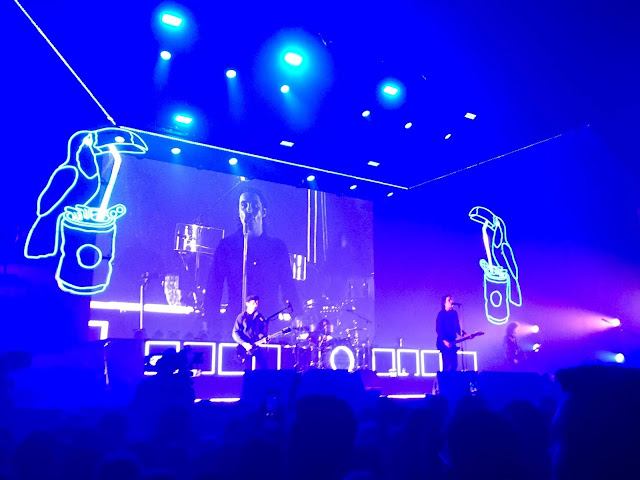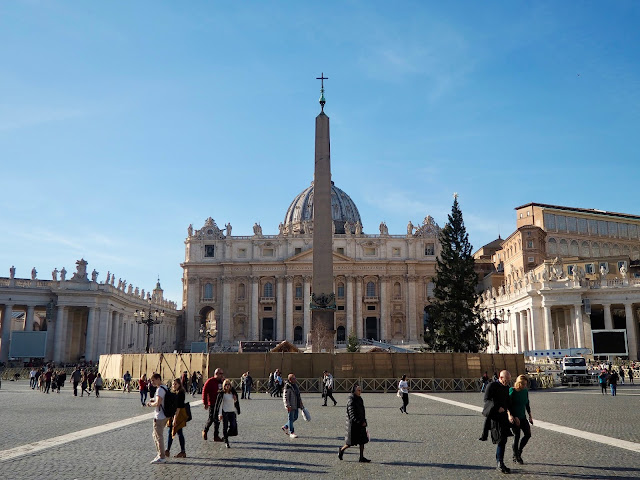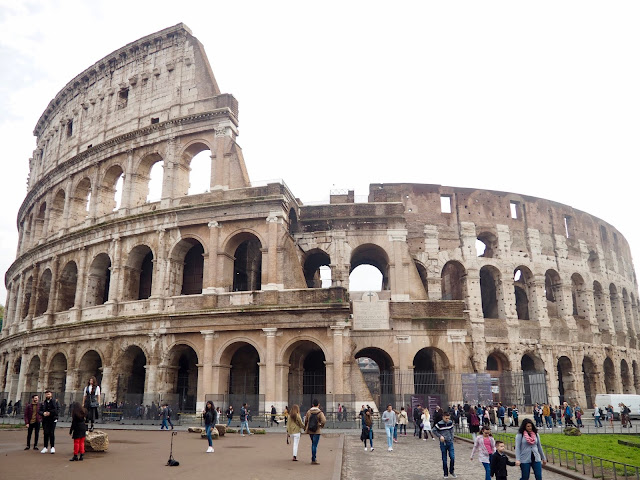
Rome City Break | Part 1
I was overdue a holiday recently, and about a mont or two ago I came across super cheap weekend flights to Rome, so I just went ahead and booked it spontaneously! I then told my mum, who asked if she, my dad, and sister could all come along, so it quickly turned into a family trip (minus my brother, who is abroad himself right now anyway). I’ve been to Rome once before, but only for a day and a half, but this was the first time in Italy for everyone else. We were away for four nights, arriving late on a Saturday evening, and leaving again on the Wednesday evening, which gave us about three and a half days to see the city – this post will be the first of two!
Day One
Day Two
Once we got inside, the audioguide basically took us on a loop halfway around the upper level, then downstairs and around the lower level. However, the stops on it don’t necessarily require you to stand in each exact spot, as it is more often talking about more general history. The Colosseum was built in the 1st century, commissioned by Emperor Vespasian and finished by his son, Titus. It took around 10 years to complete the project – which actually seems pretty quick given its size! – with thousands of slaves doing the work. Today, large sections of it are now missing, as the stone was used to build other parts of Rome during the Renaissance. It could hold almost 60,000 spectators, seated according to rank – the lower your rank, the higher you sat – and the boxes reserved for the most important guests would have lavishly decorated with marble. The Colosseum is an oval, not a circle, with entrances all around the sides, but gladiators would enter from one end, and the dead bodies were dragged out the other.
The audioguide also told us plenty about the gladiators and other games that took place here. Gladiators were either free men looking for fame and fortune – they were the celebrities of the time! – or slaves seeking to win their freedom. There were different types of fighters, equipped with different weapons as well. From the lower level of the Colosseum, you can see the underground levels, which were once hidden by the amphitheatre floor, part of which has been reconstructed. Here, the gladiators waited, but also wild animals were kept. Some could be released into the arena via trapdoors, to the awe and delight of the crowds. As well as gladiator and wild animal flights, the arena was also flooded on occasion to stage naval battles!
Once we had sufficiently explore the arena, we exited and made our way over to the Roman Forum and Palatine Hill, which is included in the same ticket. We got audioguides again for this, to understand what each of the ruined buildings once was. It took us a little while to figure out where to start, as the numbered maps on boards around the area do not match up with the numbered map in the audioguide! We got there in the end, but it did waste some time – we ended up staying inside from about 10.45am until 1.45pm, and even though the extended audio tour was meant to take 2 hours, I couldn’t complete it all in 3 (which is when you have to return the audioguide), since I got lost or mixed up a couple of times! It gave me a decent overview of it all at least. It was also a warm, sunny day, so it was very pleasant for spending a few hours roaming around outdoors.
The Roman Forum would have once been a busy, bustling, central area of the city – it seems strange to think of all those people walking around in it 2000 years ago, and the fact that these ruins still exist! It was built over many centuries, from the 5th century BC through to the 5th century AD, spanning the Roman Republic and Empire. We saw the remains of their government buildings, meeting halls (‘basilicas’ but not churches!), and of their market shops. Many of the ruins were once temples to the ancient Roman gods, including Saturn, Castor and Pollux, and Concord, as well as the House of the Vestal Virgins, who were revered in Roman society. The Temple of Romulus is an important one as well, the man who founded Rome, after defeating his twin brother, Remus, according to legend. There are triumphal arches at either end of the Forum too, dedicated to two of Rome’s Emperors, and covered in images of their victories.
The Roman Forum sits in the valley below Palatine Hill, which is covered in the second half of the audioguide. This was the place where the earliest Roman Emperors built their grand royal residences, above and away from the rest of the Forum, and looking down on the Circus Maximus (once a stadium) on the other side. It is also believed to be where Romulus and Remus were suckled by a she-wolf as infants, legend says. You can see the remains of Augustus, Tiberius, and Domitian’s palaces – because of course they needed one each! – as well as more temples and yet another stadium. A more recent addition to the hill is the Farnese Gardens and villa, built in the 16th century by Cardinal Alessandro Farnese, which is definitely quite a contrast to the ancient ruins!
We left the park early afternoon, and walked around the back of it, past the Circus Maximus, and found a cafe to stop in for lunch – pizza again for me! Our plan had been to go to the Baths of Caracalla, just a short walk away, but on arrival we discovered they close early on Mondays! I did get there in the end though – more on that in part 2. So instead, we hopped in a taxi and went back to the Altare della Patria, on the front of Capitoline Hill, and which we had passed the day before. Since it was better weather than Sunday’s clouds and rain, we wanted to go up the glass lift we had spotted on the back of it. This did mean we got to explore the rest of it as well!
You actually enter on the front of the building, and climb up all its stairs first. The monument contains the Tomb of the Unknown Soldier, flanked by two guards and flaming cauldrons in remembrance. We walked around the back of the huge statue of Vittorio Emmanuel on horseback, and then around to the back of the building where the elevators are. I don’t love glass lifts like these, but I sucked it up, and it took only seconds to reach the very top of the building. We were very glad we had kept this for a sunny day, as we could see all across Rome, including the Colosseum behind us, and St Peter’s Basilica, where we would be headed the next day. We spent a good while perusing the information boards up there, which indicated what many of the other buildings we didn’t recognise were.
We descended in the lift again, and then exited by walking down the stairs inside the building – everything was pristine white marble, and it is just as grand and decadent inside as out! It really is massive as well! There is a museum in the basement about the unification of Italy, but we opted to skip that. Instead, we exited, and stopped to get some gelato on the way back to the apartment – so many flavours to choose from, but I went with Nutella and coconut this time! After a couple of hours rest, we went out for dinner, this time choosing somewhere close to the apartment, down a little side street near Via Nazionale. We shared some salad and a meat board first, then I chose risotto for my main course this time, with prawns – there was more seafood on many menus than we had been expecting! We were all ready for bed after such busy days so far – and there was still more to come!
You May Also Like
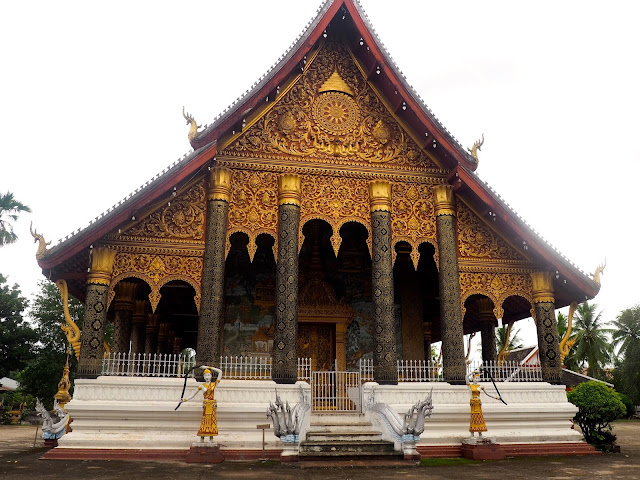
Luang Prabang | Laos Traveller
22 August 2016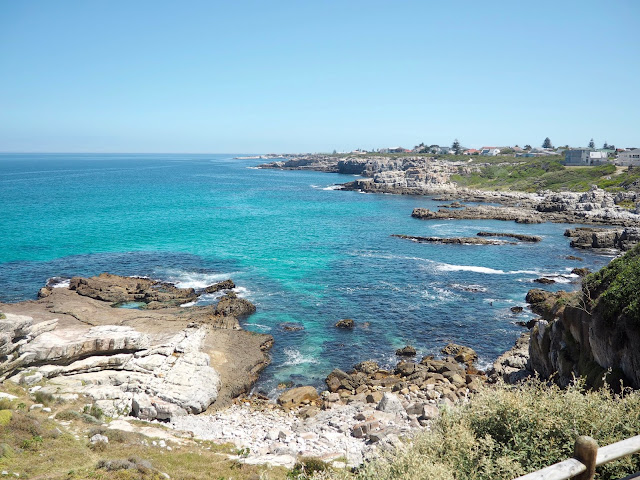
Hermanus | South Africa
2 March 2019